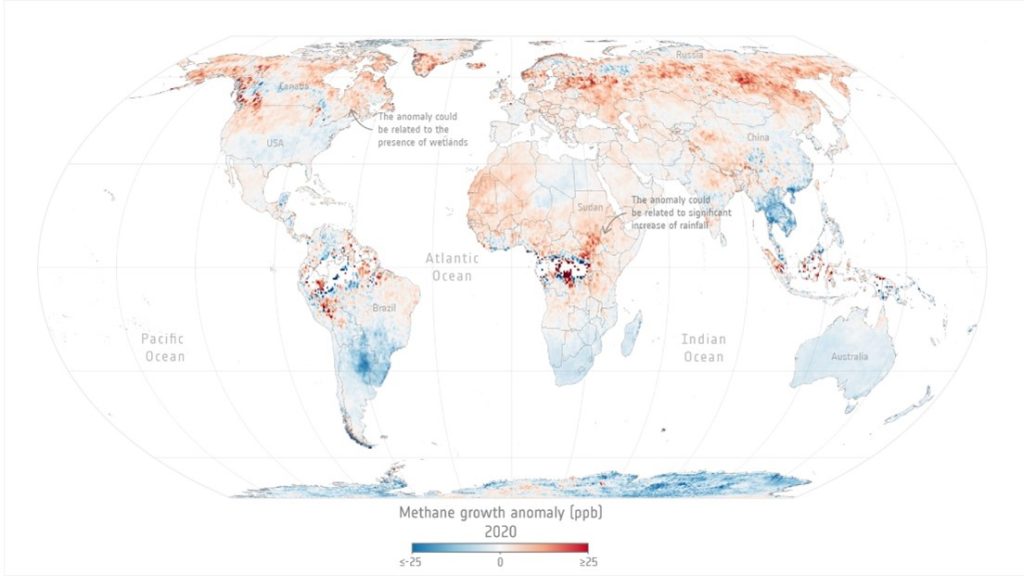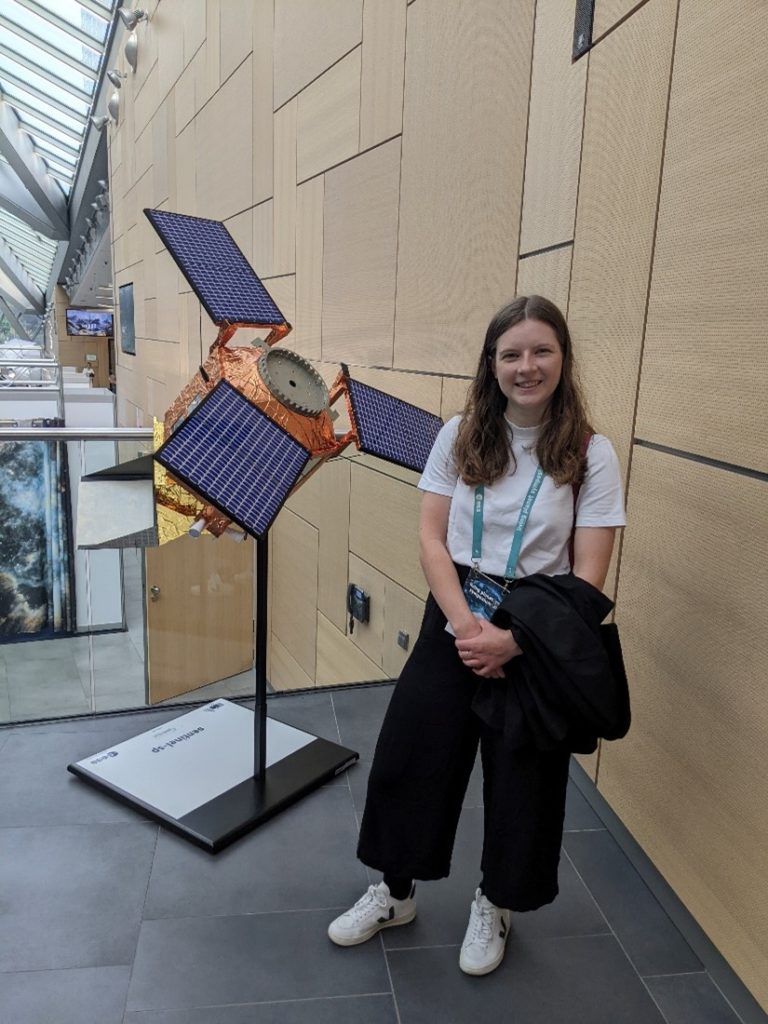Name: Emily Dowd
Institution: University of Leeds
PhD Project title: Detection and quantification of local methane sources using novel high-resolution satellite data

What is your background?
I am a 3rd year PhD student at the University of Leeds on the SENSE CDT. My PhD focuses on atmospheric methane which is the second most important anthropogenic greenhouse gas in our atmosphere after carbon dioxide. Before starting my PhD, I completed an MPhys Physics with Meteorology degree at the University of Edinburgh and worked as an Offshore Meteorologist in Aberdeen. It was my lifelong goal to be a meteorologist after I graduated, and I was thrilled to get the position in Aberdeen. After working there for a while, I decided I wanted to do a more project-based job and started looking for opportunities. Then I came across this project on the SENSE CDT, which felt like it was written for me. When I was at university, I thought that getting a PhD position was out of my reach because I struggled with taking exams, but I worked hard and got my degree. To be honest, the best bit about my undergraduate degree was doing the research project. The research project was on atmospheric methane and is probably the reason why I’m here doing this project.
I am also one of the co-founders of SatSchool which is an Earth Observation outreach programme aimed at 11-15 year olds. The aim of SatSchool is to introduce key earth observation concepts to students across the UK and as well as highlighting STEM career pathways into the Earth Observation field. The project has already reached 200+ students across the UK and we are aiming to reach many more in the future, particularly those lower income schools to broaden their horizons. I believe that being a visible role model in this field is valuable in order to show students that they too can work in the space sector.
Tell us about your project and the area of environmental science are you most excited about?
My PhD project focuses on investigating local and global atmospheric methane using satellite data and a chemical transport model. Atmospheric methane is the second most important greenhouse gas in our atmosphere after carbon dioxide. Global concentrations of methane have been rising since the 1980s, with a stagnation in growth between 1999 and 2006. Also, in 2020 and 2021 we saw the largest global annual increases in methane concentrations on record. However, our understanding of what is driving the global trends of methane remains incomplete. This is partly due to the lack of long-term observational coverage in regions of large and variable methane emissions making it difficult to fully understand what is driving these changes.

In 2017, Sentinel 5P was launched with the Tropospheric Monitoring Instrument (TROPOMI) on board. TROPOMI provides near global coverage of methane concentrations daily and had a ground pixel of 3.5km x 7km which is a big improvement on the previous satellites, such as GOSAT. GOSAT provides global coverage of methane concentrations every 3 days and has a ground pixel 10km x 10km. TROPOMI allows us to view methane in a way that has not been done before.
I have been using TROPOMI observations to investigate the large rise in global methane during 2020 and my work on this so far can be found on the ESA Webportal.
Methane is an incredibly interesting field to be working in just now with the methane pledge at COP26 and the advancement of satellite technology allowing us to monitor changes in methane. In addition to TROPOMI, GHGSat can monitor anthropogenic methane emissions at 25m resolution allowing scientists to pinpoint large emissions at the source. I think the combination of TROPOMI and GHGSat is the key to help reduce anthropogenic methane emissions, which is super exciting.
Was using satellite data at the core of your PhD project important to you?
I did not know much about Earth Observation until towards the end of my undergraduate degree. Even then, the importance of Earth Observation wasn’t entirely clear to me until I started my PhD. Satellite data is incredibly useful as it allows us to observe the earth daily and investigate changes in regions which are difficult to access and measure. For example, the largest and most variable source of methane are wetlands, and these are often in places which are difficult to access so satellites help us to observe changes over these regions.
Why did you decide to enter the space sector?
I don’t think I made a conscious decision to join the space sector, it wasn’t a career pathway I had considered. My PhD project has completely changed this and after my PhD I would consider staying in research, using Earth Observation data, or working in the space sector.

What does equity, diversity and inclusion mean to you?
It is very important for everyone to bring their whole selves to work as it builds the foundation of an inclusive environment for people to work in. It also can make way for new perspectives, research ideas and collaborations, which are crucial for making advances in science.
What are your hopes for future PhD students?
I hope that there will be better diversity in mentors and supervisors for future PhD students. I also hope that PhD students will be treated like employees at the university to remove the blurred lines between being treated as a student and researcher. Finally, I hope that future PhD students will be given the same opportunities I have been given during my PhD so far as the SENSE CDT has allow me to network with both academia and industry in a way that other students might not have the opportunity to.
Any tips for those interested in applying for PhDs?
My advice for those applying for a PhD is to make sure you are interested in the topic and are able to show in interviews why you find the topic interesting. I would also suggest meeting with supervisors on the project to get to know who you are going to be working with and gain a better understanding of the project you are applying for.
Find out more about some of Emily’s work here.
Find out more about SatSchool here.



